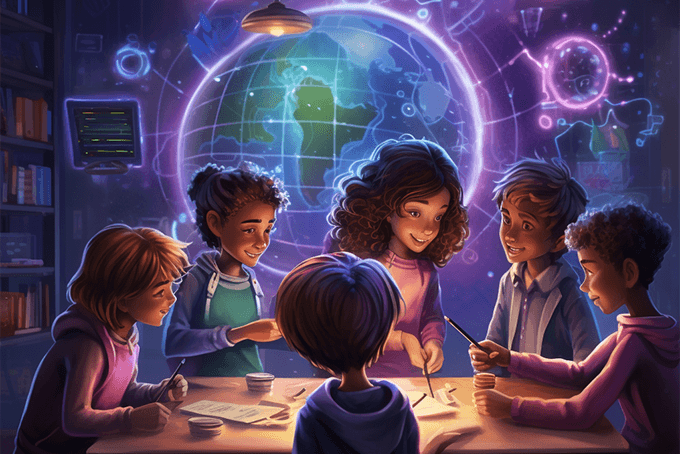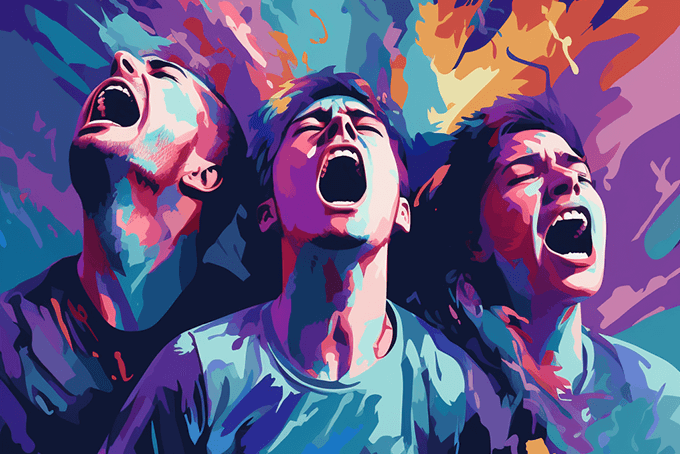Visual learning is a powerful tool for gaining knowledge and understanding information. If you consider yourself a visual learner or want to explore the benefits of this learning style, you’ve come to the right place. In this ultimate guide, we will delve into the world of visual learning, uncover its benefits, explore strategies for visual learners, introduce useful tools, and address the challenges often faced by those who rely on visuals for learning.
Understanding Visual Learning
Defining Visual Learning
Visual learning is a learning style that involves using images, diagrams, charts, and other visual aids to comprehend and retain information more effectively. For visual learners, seeing information presented visually is more impactful than simply reading or hearing it. This learning style taps into the power of visual perception and memory, allowing individuals to better process and understand complex concepts.
Visual learning is not only beneficial for students but also for professionals in various fields. For example, architects often rely on visual learning techniques to conceptualize and communicate their design ideas effectively. By creating detailed sketches and 3D models, architects can visualize their projects before they are built, helping them identify potential issues and make necessary adjustments early in the design process.
The Science Behind Visual Learning
Scientists have discovered that our brains are wired to process visual information more efficiently than other types of information. The visual system is closely interconnected with memory and emotions, making visual learning a compelling approach for information retention. Research shows that the brain can process visual information simultaneously, allowing visual learners to grasp concepts quickly and make lasting connections.
Moreover, visual learning can enhance creativity and critical thinking skills. When individuals engage with visual stimuli, such as artworks or infographics, different parts of their brains are activated, stimulating innovative thinking and problem-solving abilities. This cognitive process not only fosters a deeper understanding of the subject matter but also encourages individuals to approach challenges from new perspectives, leading to more creative solutions.
Benefits of Visual Learning
Enhancing Memory Retention
One of the key benefits of visual learning is its ability to enhance memory retention. Visuals such as diagrams, charts, and infographics create strong mental associations, making it easier for visual learners to recall information when needed. By engaging the visual cortex, visual learning strengthens memory pathways, improving long-term retention.
Moreover, visual learning can be particularly effective in triggering emotional responses that further aid in memory retention. When individuals connect emotionally to visual stimuli, such as impactful images or videos, the information becomes more deeply ingrained in their memory. This emotional engagement can create a powerful link between the visual content and the individual’s personal experiences, reinforcing the retention of key concepts.
Facilitating Understanding
Visual learning helps individuals grasp and understand complex concepts more easily. By breaking down information into visual components, visual learners can see patterns, relationships, and connections that may be harder to identify through traditional text-based learning. Visual aids provide a visual roadmap, enabling learners to navigate through intricate subjects, making learning more enjoyable and accessible.
In addition, visual learning can enhance critical thinking skills by encouraging learners to analyze and interpret visual data. When presented with visual information, individuals are prompted to evaluate the significance of different elements, draw conclusions, and make connections between various pieces of information. This analytical process not only deepens understanding but also cultivates a more holistic approach to problem-solving and decision-making.
Strategies for Visual Learners
Using Diagrams and Mind Maps
Diagrams and mind maps are powerful tools for visual learners. These visual representations help organize information hierarchically, allowing learners to visualize relationships and interconnections between concepts. By using colors and symbols, visual learners can categorize and associate ideas, transforming complex information into easy-to-understand visual structures.
Furthermore, diagrams and mind maps can enhance memory retention for visual learners. The act of creating these visual aids engages multiple senses, reinforcing the connections between different pieces of information. This process of active learning can lead to a deeper understanding of the material and improved recall during exams or presentations.
Leveraging Infographics and Visual Aids
Infographics and visual aids present information in a visually appealing and concise manner. Visual learners can quickly grasp the main points and concepts presented through images, icons, and graphs. Infographics are particularly effective in summarizing large amounts of data, making them an excellent resource for visual learners seeking to understand complex information efficiently.
In addition to aiding comprehension, infographics and visual aids can also foster creativity in visual learners. When exposed to well-designed visuals, individuals are inspired to think outside the box and explore new ways of presenting information. This creative stimulation can lead to innovative problem-solving approaches and a deeper appreciation for the power of visual communication.
Tools for Visual Learning
Best Software for Visual Learning
Various software tools cater to visual learners, providing a platform to create, modify, and share visual content. Popular software options include graphic design software like Adobe Illustrator or Canva, mind mapping software like MindMeister or XMind, and presentation tools like Microsoft PowerPoint or Google Slides. These software programs offer a range of features to create visually engaging and informative materials.
Moreover, in recent years, augmented reality (AR) and virtual reality (VR) tools have gained popularity among visual learners for their immersive and interactive capabilities. Applications like Tilt Brush, Gravity Sketch, and CoSpaces Edu allow users to create three-dimensional visualizations, enhancing the learning experience by providing a hands-on approach to exploring complex concepts.
Utilizing Online Resources for Visual Learning
The internet offers a vast array of online resources specifically designed to support visual learners. Websites such as Khan Academy, Coursera, and TED-Ed provide video tutorials, visually-rich lectures, and interactive learning modules. Online platforms like Pinterest and YouTube can also be excellent repositories for infographics, diagrams, and other visual learning materials curated by subject matter experts.
Furthermore, social media platforms such as Instagram and TikTok have emerged as unconventional yet effective tools for visual learning. Educators and content creators leverage these platforms to deliver bite-sized visual content, making learning more accessible and engaging for a wide audience. By incorporating animations, short videos, and interactive quizzes, these platforms offer a dynamic way to absorb information and reinforce key concepts.
Overcoming Challenges in Visual Learning
Dealing with Text-Heavy Materials
While visual learners thrive on visual content, they may sometimes encounter text-heavy materials that require extra effort to process. In such cases, visual learners can employ strategies like highlighting key points, summarizing text in visual formats, or creating visual annotations. By transforming dense text into visual representations, visual learners can better grasp the information and make it more engaging.
Moreover, another effective technique for visual learners dealing with text-heavy materials is the use of mind maps. Mind maps are visual diagrams that represent information in a hierarchical and structured way, making it easier for visual learners to organize and comprehend complex textual information. By creating mind maps for text-heavy materials, visual learners can enhance their understanding and retention of the content.
Improving Focus and Concentration
In a world filled with distractions, maintaining focus and concentration can be challenging for visual learners. To address this, visual learners can adopt strategies such as creating a visually structured study environment, using noise-canceling headphones, or practicing mindfulness techniques. These techniques can help minimize distractions and enhance focus, ensuring a more productive visual learning experience.
Furthermore, incorporating regular breaks into study sessions can also benefit visual learners in improving focus and concentration. Taking short breaks between study intervals allows visual learners to rest their minds, prevent burnout, and maintain optimal cognitive functioning. By strategically scheduling breaks, visual learners can enhance their overall learning efficiency and effectiveness.
Conclusion
Visual learning offers a powerful approach to understanding and retaining information. By leveraging visuals, visual learners can tap into their innate ability to process and remember information more effectively. Incorporating strategies, tools, and resources specifically designed for visual learners can greatly enhance the learning experience. So, embrace your visual learning style and unlock new levels of understanding and knowledge.



